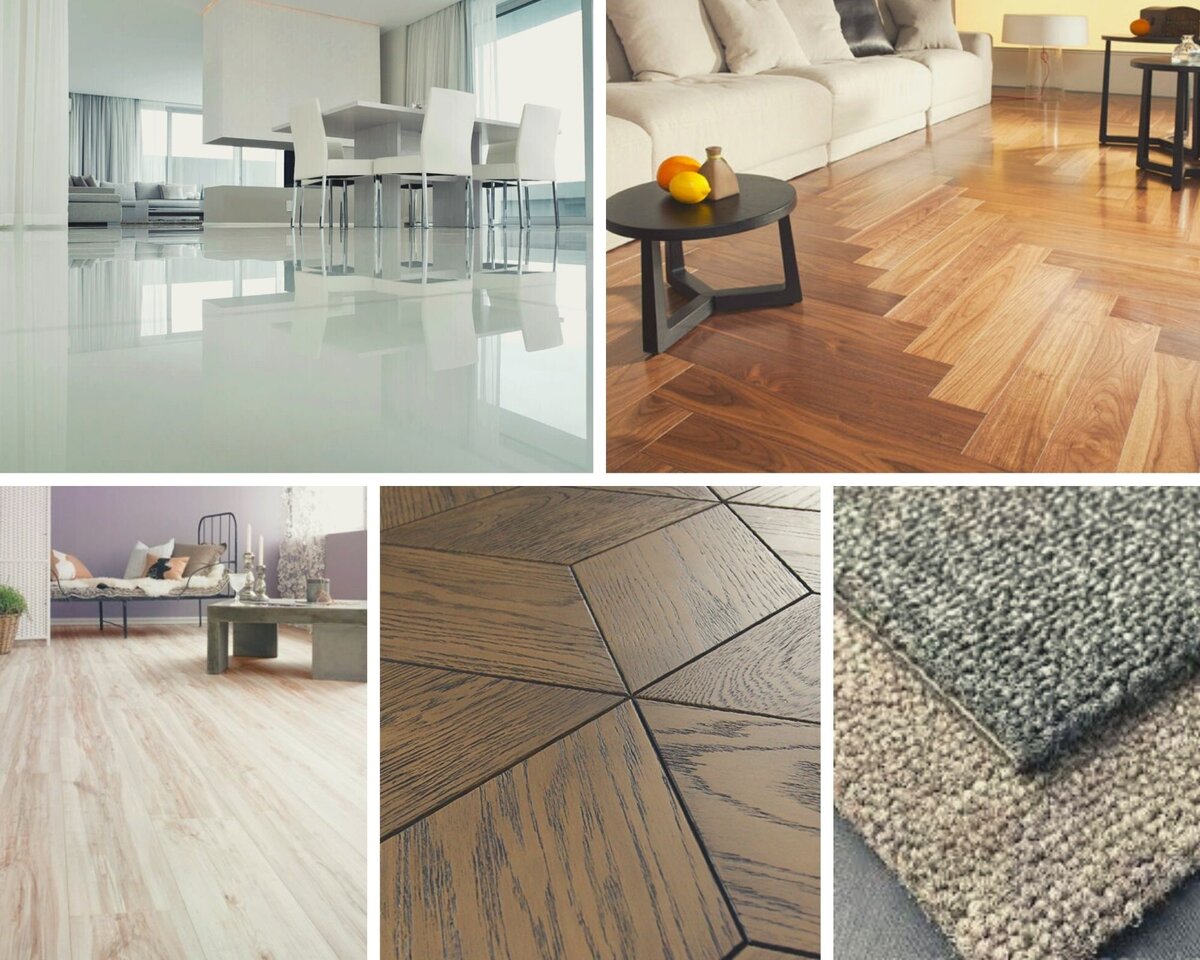Which floor coverings are suitable for an apartment?

Introduction
The choice of flooring plays a key role in the interior of an apartment. The floor should be not only beautiful, but also functional: resistant to moisture, mechanical damage, easy to clean and pleasant to the touch.
The modern market offers a variety of coatings: parquet, laminate, quartz-vinyl, ceramic granite and others. It is important to consider where exactly the material will be used, as well as its compatibility with the warm floor.
In this article, we will discuss:
✔ Which coatings are more durable?
✔ Which materials are suitable for the kitchen, living room and bedroom?
✔ Can different coatings be combined in one apartment?
✔ How to choose the right coating for the floor heating system?
1. Parquet, laminate, quartz-vinyl: what is more durable?
Parquet - status and naturalness
📌 What is it?
Parquet is a natural wooden coating that gives the interior solidity and coziness.
✔ Pros:
✅ Natural material, eco-friendliness.
✅ Durability with proper care (serves 20-50 years).
✅ Warm and pleasant to the touch.
✅ Can be sanded and updated.
❌ Cons:
❌ Sensitive to moisture - not suitable for bathroom and kitchen.
❌ Requires careful maintenance and protection from scratches.
❌ High price compared to other coatings.
👉 Conclusion: Suitable for living room, bedroom and office, but requires careful handling.
Laminate - universal and affordable
📌 What is it?
Laminate is a multi-layer coating with a protective top layer and a decorative print, imitating wood, stone or other materials.
✔ Pros:
✅ Affordable price.
✅ Resistance to mechanical damage.
✅ Ease of installation (lock system).
✅ Variety of designs.
❌ Cons:
❌ Afraid of strong moisture (standard laminate is not suitable for bathroom and kitchen).
❌ Can be cold without heating.
❌ Cannot be restored, unlike parquet.
👉 Conclusion: A good choice for living room, bedroom and corridor, but in rooms with high humidity, it is better to choose water-resistant laminate.
Quartz-vinyl - strength and water resistance
📌 What is it?
Quartz-vinyl tile (SPC) is a composite coating consisting of vinyl, quartz crumbs and a protective layer.
✔ Pros:
✅ Absolute water resistance - can be laid in the bathroom, kitchen, hallway.
✅ High resistance to scratches and impacts.
✅ Not afraid of temperature changes.
✅ Good sound insulation.
✅ Suitable for heated floors.
❌ Cons:
❌ May lose to parquet in aesthetics and naturalness.
❌ Some cheap models may release formaldehydes.
👉 Conclusion: Ideal option for kitchen, bathroom, hallway and rooms with high traffic.
2. How to choose a coating resistant to moisture and mechanical damage?
In which rooms is protection against moisture important?
🔹 Kitchen: high humidity, possible spills and contamination.
🔹 Bathroom: constant contact with water.
🔹 Entrance hall: possible wet traces from the street.
Which coatings to choose?
💠 For the kitchen: quartz-vinyl, ceramic granite or water-resistant laminate.
💠 For the bathroom: ceramic granite, quartz-vinyl or poured floor.
💠 For the entrance hall: ceramic granite, quartz-vinyl or combined coatings.
👉 Conclusion: In rooms with high humidity, it is better to choose coatings with water and contamination protection.
3. Combined floors: how to correctly combine materials?
Combining several coatings in one room helps to zone the space and make it more functional.
How to combine materials?
📌 Living room + kitchen:
— Laminate in the living room area + quartz-vinyl or tile in the kitchen area.
📌 Entrance hall + corridor:
— Ceramic granite at the entrance + laminate or parquet in the rest of the area.
📌 Bedroom + dressing room:
— Parquet or laminate in the bedroom + carpet in the dressing room area.
📌 Bathroom + bedroom (in a studio):
— Ceramic granite in the bathroom + quartz-vinyl or laminate in the bedroom.
Tips for combining coatings:
✔ Choose materials that visually complement each other.
✔ Use transition profiles to connect two coatings.
✔ Consider the floor height level to avoid steps.
👉 Conclusion: Combined floors help divide the space and choose optimal coatings for each zone.
4. Floor heating systems and their compatibility with coatings
If a warm floor is planned in the apartment, it is important to choose coatings that are compatible with the heating system.
Which coatings are suitable for heated floors?
✔ Quartz-vinyl - perfectly conducts heat and does not deform.
✔ Laminate - can be used special laminate for warm floors.
✔ Ceramic granite and tile - the best option for water heating systems.
✔ Parquet - allowed, but it is important to choose thermally stable wood (e.g. oak, teak).
Which coatings cannot be used?
❌ Cheap laminate - may release toxic substances when heated.
❌ Natural solid wood - may dry out and deform.
❌ Carpet with high pile - poorly conducts heat.
👉 Conclusion: If a warm floor is planned, choose materials with good thermal conductivity and resistance to temperature changes.
Conclusion
How to choose the perfect floor coating?
✔ Parquet - for coziness and aesthetics in the bedroom, living room, office.
✔ Laminate - a universal option, affordable.
✔ Quartz-vinyl - water resistance and strength for the kitchen, bathroom and entrance hall.
✔ Ceramic granite - a reliable coating for wet areas.
✔ Combined coatings - a stylish solution for zoning.
What is important to consider?
✔ Moisture resistance level.
✔ Resistance to mechanical damage.
✔ Compatibility with the floor heating system.
A competent choice of coating will make the apartment beautiful, comfortable and durable. 🏡✨